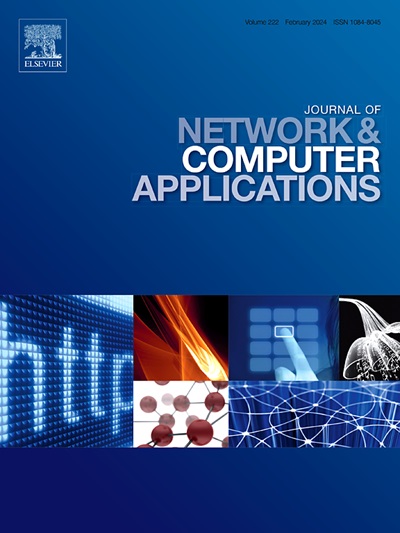Effective ensemble learning phishing detection system using hybrid feature selection
IF 8
2区 计算机科学
Q1 COMPUTER SCIENCE, HARDWARE & ARCHITECTURE
引用次数: 0
Abstract
Phishing emails pose a significant threat to individuals and os, with traditional detection methods struggling to keep pace with the evolving sophistication of these attacks. Conventional Machine Learning (ML) approaches exhibit several limitations in achieving satisfactory accuracy levels when challenged with the evolving sophistication of phishing techniques. To effectively mitigate this challenge, the implementation of an advanced detection system incorporating innovative and sophisticated ML algorithms is crucial. Therefore, this paper proposed a novel stacking ensemble learning approach that leverages hybrid feature selection. The proposed model enhances the effectiveness of phishing detection by combining predictions from multiple ML algorithms, each utilising different subsets of features extracted from various parts of the email, including the header, body, and URLs. This comprehensive feature set ensures that the model captures a wide range of characteristics that differentiate phishing emails from legitimate ones. Extensive experiments were conducted to evaluate the effectiveness of the proposed model. The experimental results demonstrate that the proposed model achieves an impressive accuracy of 99.53% and an F1-measure of 0.9955, surpassing the highest accuracy of 99.10% obtained by any individual ML algorithm and outperforming the most effective phishing detection systems documented in recent literature. This significant improvement in accuracy highlights the efficacy of ensemble learning in this domain. Furthermore, the increase in accuracy is achieved with only a minimal 1.6 ms increase in detection time, making the model practical for real-world applications. This paper contributes significantly to the field of phishing detection by demonstrating the effectiveness of ensemble learning techniques in combination with hybrid feature selection. The proposed model offers a practical and effective solution to the problem of phishing, with the potential to significantly reduce the number of malicious emails reaching users’ inboxes.
基于混合特征选择的有效集成学习网络钓鱼检测系统
网络钓鱼电子邮件对个人和操作系统构成重大威胁,传统的检测方法难以跟上这些攻击不断发展的复杂性。面对网络钓鱼技术不断发展的挑战,传统的机器学习(ML)方法在达到令人满意的准确性水平方面存在一些局限性。为了有效地缓解这一挑战,采用先进的检测系统,结合创新和复杂的机器学习算法是至关重要的。因此,本文提出了一种利用混合特征选择的叠加集成学习方法。提出的模型通过结合来自多个ML算法的预测来增强网络钓鱼检测的有效性,每个算法都利用从电子邮件的不同部分提取的不同特征子集,包括标题、正文和url。这个全面的功能集确保该模型能够捕获广泛的特征,从而将网络钓鱼电子邮件与合法电子邮件区分开来。进行了大量的实验来评估所提出模型的有效性。实验结果表明,所提出的模型达到了令人印象深刻的99.53%的准确率和0.9955的f1测量值,超过了任何单个ML算法获得的99.10%的最高准确率,并且优于最近文献中记录的最有效的网络钓鱼检测系统。这种准确性的显著提高突出了集成学习在该领域的有效性。此外,精度的提高仅在检测时间增加1.6 ms的情况下实现,使该模型适用于实际应用。本文通过展示集成学习技术与混合特征选择相结合的有效性,对网络钓鱼检测领域做出了重大贡献。所提出的模型为网络钓鱼问题提供了一个实用而有效的解决方案,有可能显著减少到达用户收件箱的恶意电子邮件的数量。
本文章由计算机程序翻译,如有差异,请以英文原文为准。
求助全文
约1分钟内获得全文
求助全文
来源期刊

Journal of Network and Computer Applications
工程技术-计算机:跨学科应用
CiteScore
21.50
自引率
3.40%
发文量
142
审稿时长
37 days
期刊介绍:
The Journal of Network and Computer Applications welcomes research contributions, surveys, and notes in all areas relating to computer networks and applications thereof. Sample topics include new design techniques, interesting or novel applications, components or standards; computer networks with tools such as WWW; emerging standards for internet protocols; Wireless networks; Mobile Computing; emerging computing models such as cloud computing, grid computing; applications of networked systems for remote collaboration and telemedicine, etc. The journal is abstracted and indexed in Scopus, Engineering Index, Web of Science, Science Citation Index Expanded and INSPEC.
 求助内容:
求助内容: 应助结果提醒方式:
应助结果提醒方式:


